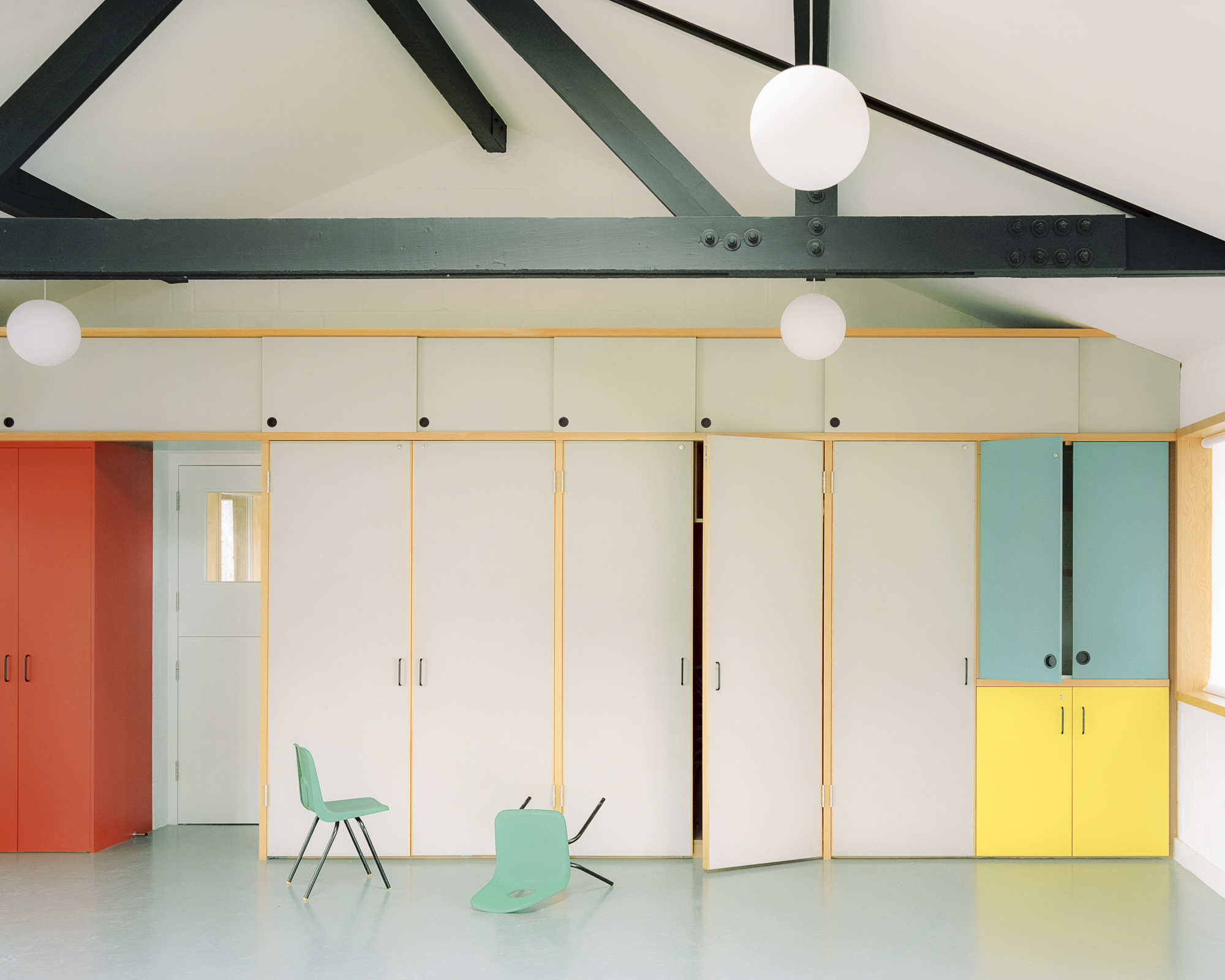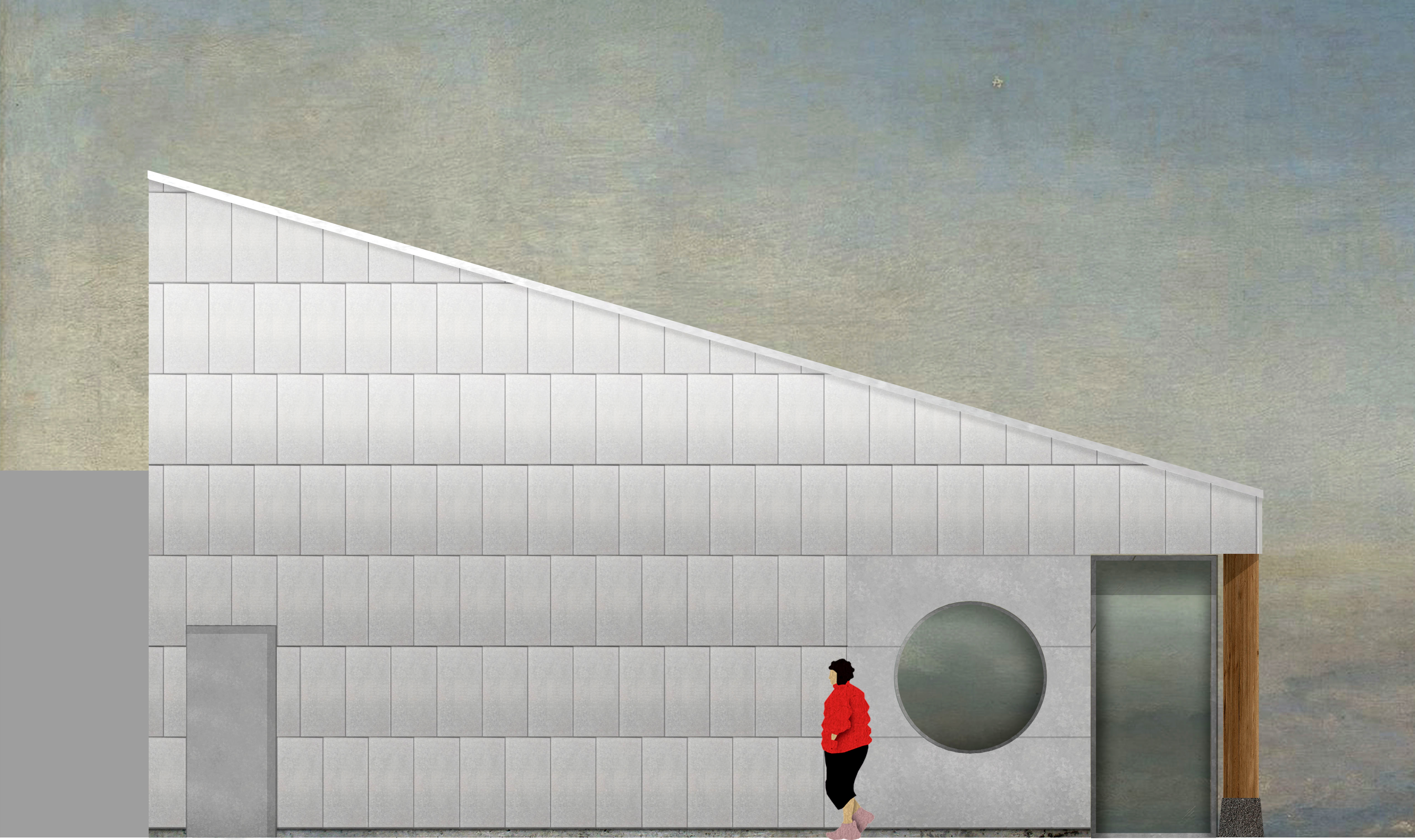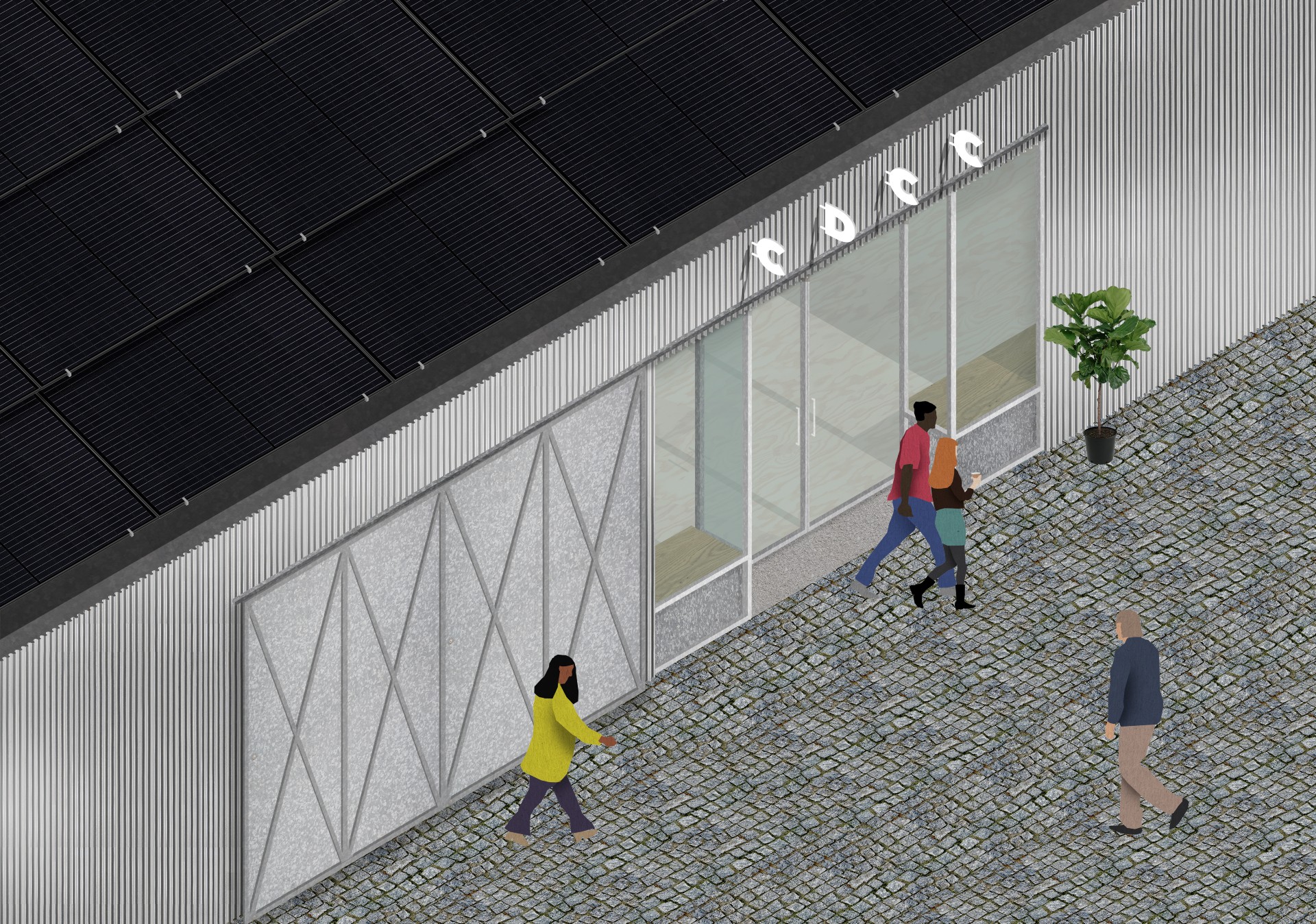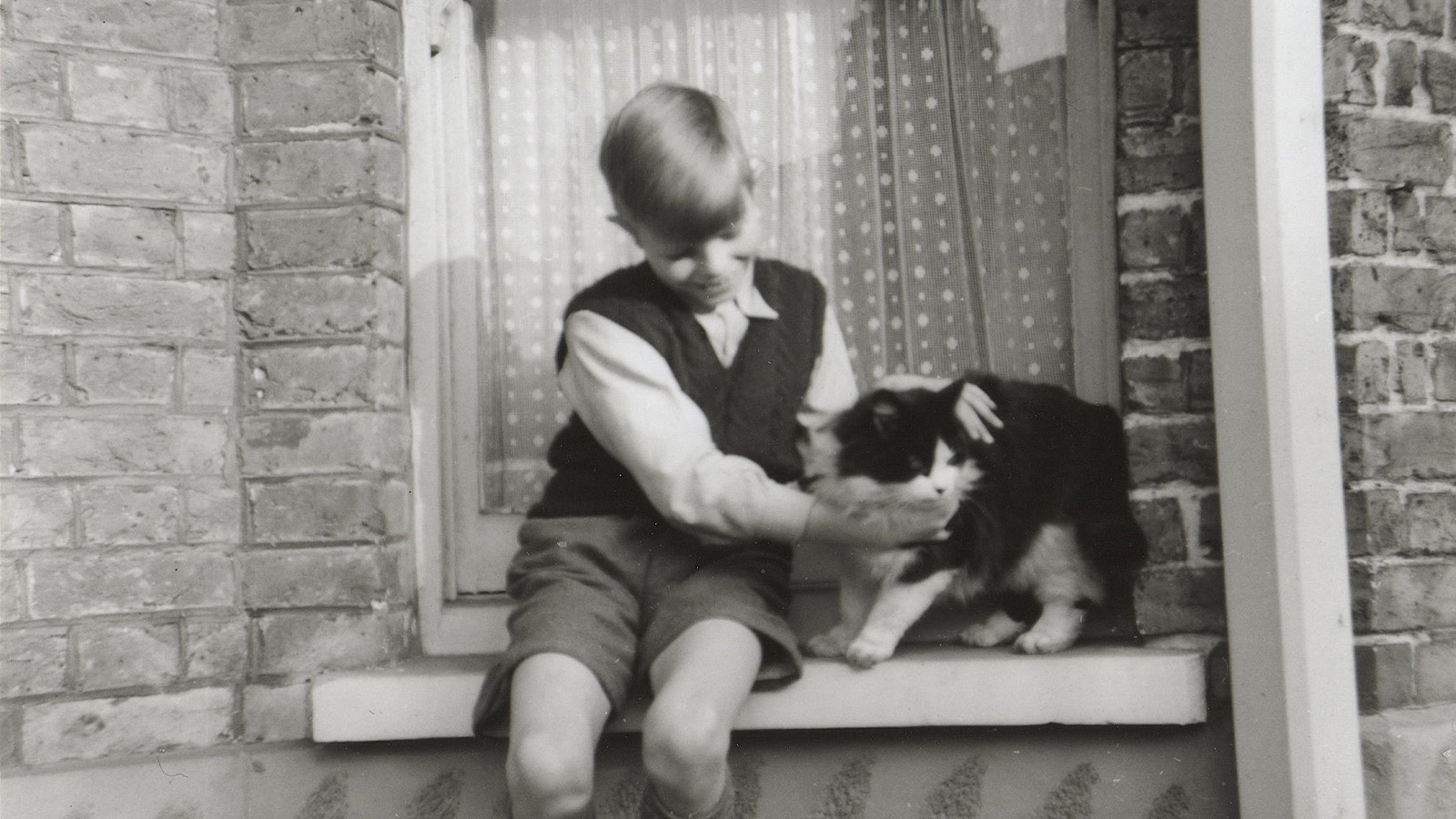Pup Architects on designs that enrich culture and community
The world is changing and architecture is adapting, and a new wave of young practices in London emerges. They are armed with bold ideas, digital tools, new studio set ups and innovative designs and approaches. In our Next Generation series, join us in hailing this nexus of exciting studios from the UK capital through an ongoing series of weekly profiles. Pup Architects, run by directors Chloë Leen, Theo Molloy and Steve Wilkinson, put architecture’s role in enriching social and cultural life in the community at the heart of their work.

2012 was a key year for Chloë Leen, Theo Molloy and Steve Wilkinson. The Olympics not only turned the global spotlight to London but also marked the trio's first collaboration, a series of pavilions commissioned by the Greater London Authority for the Games. The architects, who have previously worked at practices such as Sam Jacob, Ash Sakula and Grimshaw, eventually formally joined forces in 2017 forming Pup Architects, an energetic, community-orientated studio based in East London.
The interaction of people and architecture, a sense of community that this brings, coupled with ideas of playfulness are key to the team's approach. ‘Our projects are usually both pragmatic and playful,' they explain. ‘Fundamentally we are concerned with how people interpret and use a space. We approach every project differently and treat it as an opportunity to create something unique. The use and combinations of materials is fundamental to this at many levels: from playing with architectural language, to how they make a space feel. Sustainability is another key consideration for us, which often helps to define material choices – thinking about how to be resourceful, efficient and purposeful. It’s a good constraint to drive innovative solutions.'
Their very first work as Pup was HVAC, the winner of the inaugural Antepavilion competition in 2017– an open call by the namesake charity for an experimental temporary structure. From there, they engaged with a number of smaller and medium scale works, culminating to the most recent completion, Surrey Docks Farm, an elegant, crisp refurbishment of a then-derelict, now-black-wood-clad tower into an animal-rearing facility with community and education spaces. ‘[It] is our largest completed project to date, and it demonstrates a lot of our values of working with communities in a public setting,' they say. ‘It will be great to see the development’s impact over the coming years.'
The next big thing for them is the ongoing Cody Dock Community Centre project, a new community centre constructed from hempcrete and timber for Cody Dock in Newham. Pup, here again, are developing ways for architecture to create a dialogue and support the local community, while remaining respectful to the natural environment as well as the multi-layered existing context. A common thread in their socially and environmentally friendly approach slowly and steadily becomes apparent.
Achieving their goals, of course, also takes the right client. ‘In the UK there is still quite a lot of conservatism around architecture and ideas about what it should be,' they say. ‘If you look to other countries, architecture often has a much greater plurality. Clients can be very risk-averse and this diminishes the lack of opportunities for young practices. There is a real breadth of young talented architects with a diversity of approaches who are often overlooked in favour of established practices. And there is still a real disparity when it comes to representation of minorities and women in the field.'

The next big thing for them is the ongoing Cody Dock Community Centre project, a new community centre constructed from hempcrete and timber for Cody Dock in Newham. Pup, here again, are developing ways for architecture to create a dialogue and support the local community, while remaining respectful to the natural environment as well as the multi-layered existing context. A common thread in their socially and environmentally friendly approach slowly and steadily becomes apparent.
RELATED STORY

Achieving their goals, of course, also takes the right client. ‘In the UK there is still quite a lot of conservatism around architecture and ideas about what it should be,' they say. ‘If you look to other countries, architecture often has a much greater plurality. Clients can be very risk-averse and this diminishes the lack of opportunities for young practices. There is a real breadth of young talented architects with a diversity of approaches who are often overlooked in favour of established practices. And there is still a real disparity when it comes to representation of minorities and women in the field.'
Their hope is that in the not-too-distant future, architects will be able to input more on societal issues and have a positive and useful contribution to solving problems, from housing to the climate crisis and inequality.
The dynamic trio has been busy through the pandemic and has plenty of plans and ambitions for the future. They have been redesigning their website, pitching and designing on all scales, while trying to remain true to their vision. ‘In general we are interested in architecture’s role in enriching social and cultural life,' they add. ‘So far, this is embodied in our projects with charities and community-led organisations such as Surrey Docks Farm and Cody Dock. However we do have a much broader ambition to work on positively impactful public-facing projects, which might include work with museums, fashion, housing, workspaces.'

Surrey Docks Farm, Rotherhithe, 2020

CDCC community centre, Newham, ongoing

CDCC community centre, Newham, ongoing

The Antepavilion, 2017

Floor lamps for the Delfina Foundation, 2019
INFORMATION
Receive our daily digest of inspiration, escapism and design stories from around the world direct to your inbox.
Ellie Stathaki is the Architecture & Environment Director at Wallpaper*. She trained as an architect at the Aristotle University of Thessaloniki in Greece and studied architectural history at the Bartlett in London. Now an established journalist, she has been a member of the Wallpaper* team since 2006, visiting buildings across the globe and interviewing leading architects such as Tadao Ando and Rem Koolhaas. Ellie has also taken part in judging panels, moderated events, curated shows and contributed in books, such as The Contemporary House (Thames & Hudson, 2018), Glenn Sestig Architecture Diary (2020) and House London (2022).
-
 John Costi interrogates his fractured psyche with new Somerset House show ‘Bapou’s Bubbles’
John Costi interrogates his fractured psyche with new Somerset House show ‘Bapou’s Bubbles’The artist discovered his creativity while imprisoned for armed robbery. Now, he’s hosting a surreal performance piece that speaks to the healing power of art
-
 Europe’s auto industry regroups at the Brussels Motor Show: what’s new and notable for 2026
Europe’s auto industry regroups at the Brussels Motor Show: what’s new and notable for 20262026’s 102nd Brussels Motor Show played host to a number of new cars and concepts, catapulting this lesser-known expo into our sightlines
-
 Wallpaper* Best Use of Material 2026: Beit Bin Nouh, Saudi Arabia, by Shahira Fahmy
Wallpaper* Best Use of Material 2026: Beit Bin Nouh, Saudi Arabia, by Shahira FahmyBeit Bin Nouh by Shahira Fahmy is a captivating rebirth of a traditional mud brick home in AlUla, Saudi Arabia - which won it a place in our trio of Best Use of Material winners at the Wallpaper* Design Awards 2026
-
 You can soon step inside David Bowie’s childhood home
You can soon step inside David Bowie’s childhood homeWith a set completion date by 2027, the musician's childhood home in Bromley will be restored to its original 1960s appearance, including Bowie’s bedroom, the launchpad for his long career
-
 Welcome to The Float House, proof that life on London’s canals can be warm and elegant
Welcome to The Float House, proof that life on London’s canals can be warm and elegantMoored on London’s Grand Union Canal, The Float House, designed by TiggColl Architects, reimagines what a houseboat can be
-
 Wallpaper* Design Awards: this rammed-earth house in Wiltshire is an eco exemplar
Wallpaper* Design Awards: this rammed-earth house in Wiltshire is an eco exemplarTuckey Design Studio’s rammed-earth house in the UK's Wiltshire countryside stands out for its forward-thinking, sustainable building methods – which earned it a place in our trio of Best Use of Material winners at the 2026 Wallpaper* Design Awards
-
 Fulham FC’s new Riverside Stand by Populous reshapes the match-day experience and beyond
Fulham FC’s new Riverside Stand by Populous reshapes the match-day experience and beyondPopulous has transformed Fulham FC’s image with a glamorous new stand, part of its mission to create the next generation of entertainment architecture, from London to Rome and Riyadh
-
 This modern Clapham house is nestled indulgently in its garden
This modern Clapham house is nestled indulgently in its gardenA Clapham house keeps a low profile in south London, at once merging with its environment and making a bold, modern statement; we revisit a story from the Wallpaper* archives
-
 Step inside this perfectly pitched stone cottage in the Scottish Highlands
Step inside this perfectly pitched stone cottage in the Scottish HighlandsA stone cottage transformed by award-winning Glasgow-based practice Loader Monteith reimagines an old dwelling near Inverness into a cosy contemporary home
-
 This curved brick home by Flawk blends quiet sophistication and playful details
This curved brick home by Flawk blends quiet sophistication and playful detailsDistilling developer Flawk’s belief that architecture can be joyful, precise and human, Runda brings a curving, sculptural form to a quiet corner of north London
-
 A compact Scottish home is a 'sunny place,' nestled into its thriving orchard setting
A compact Scottish home is a 'sunny place,' nestled into its thriving orchard settingGrianan (Gaelic for 'sunny place') is a single-storey Scottish home by Cameron Webster Architects set in rural Stirlingshire